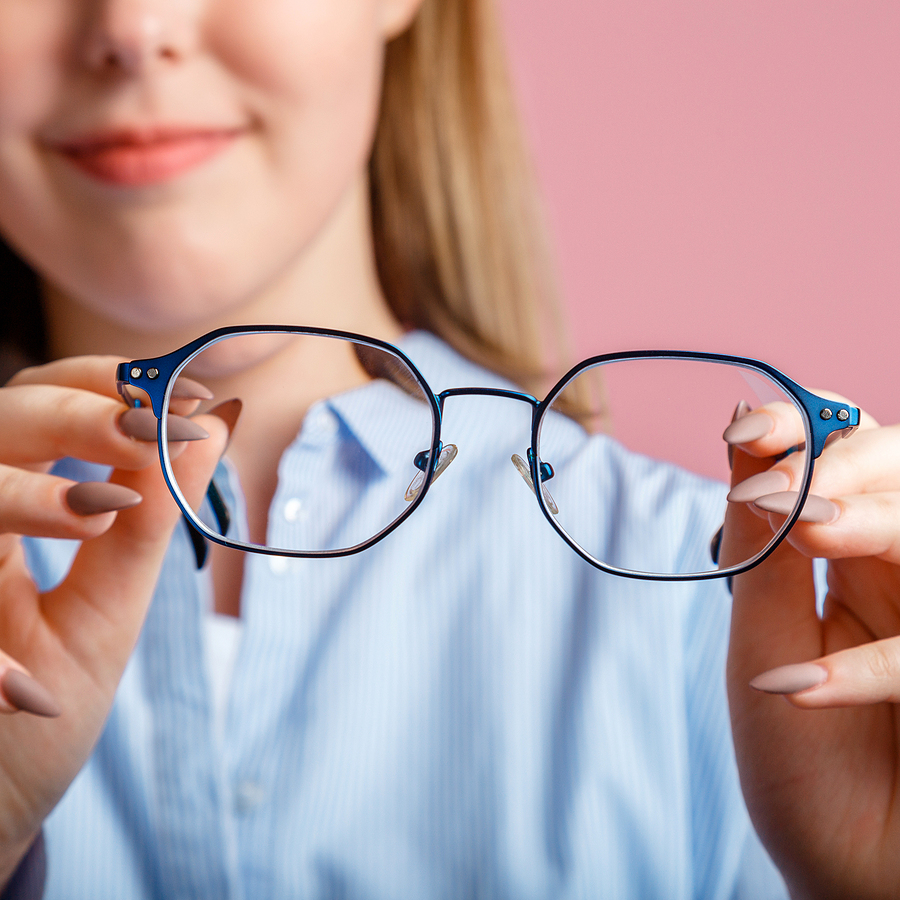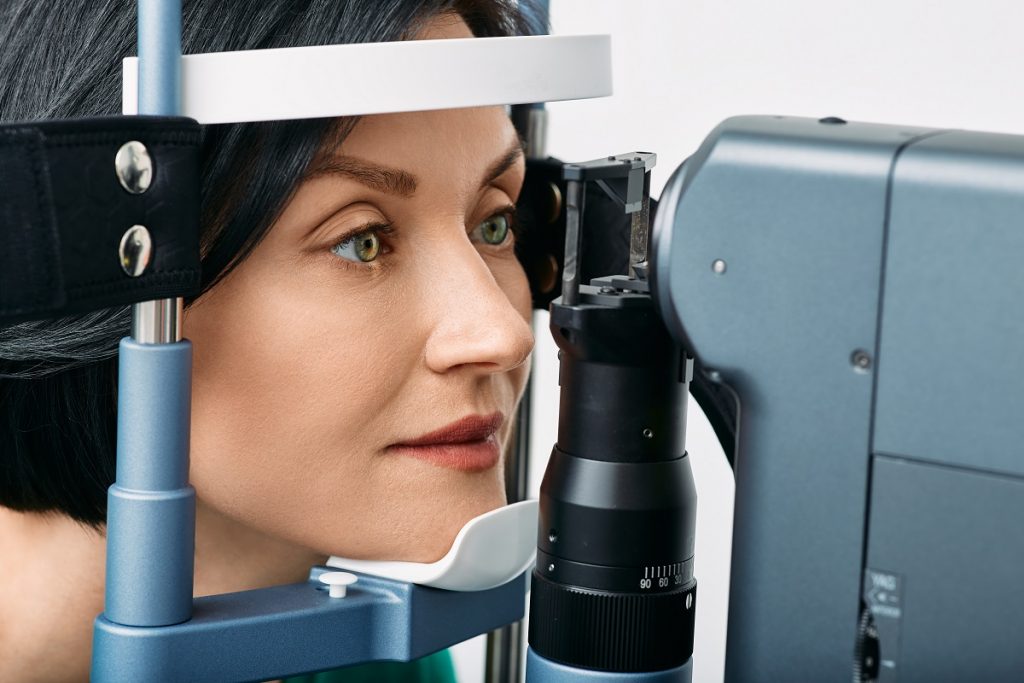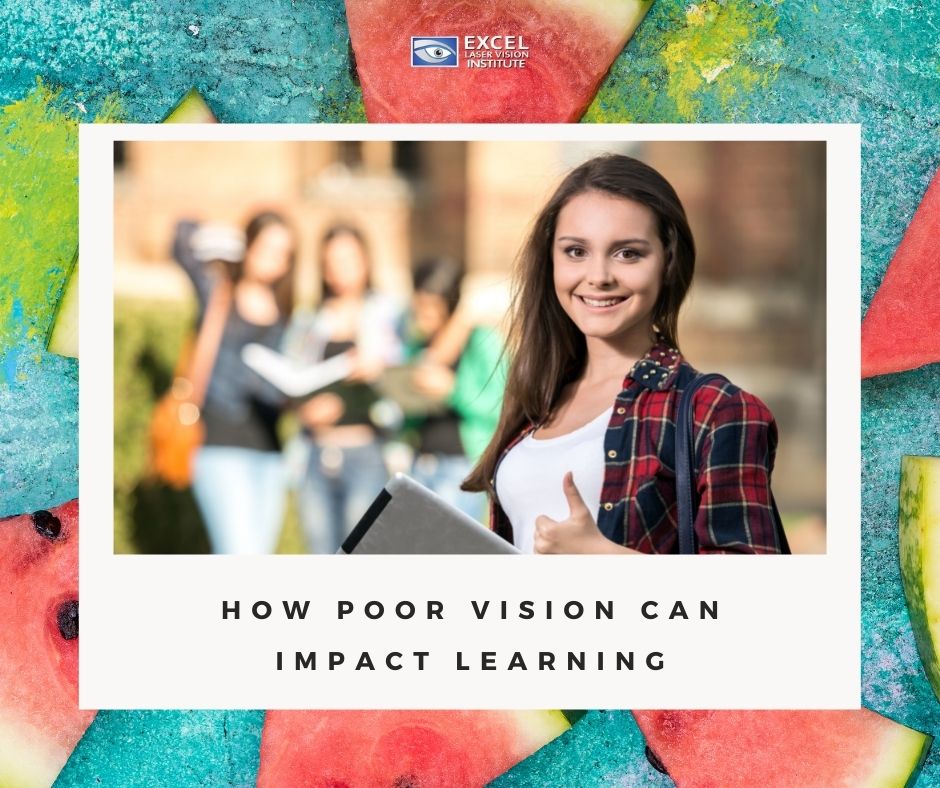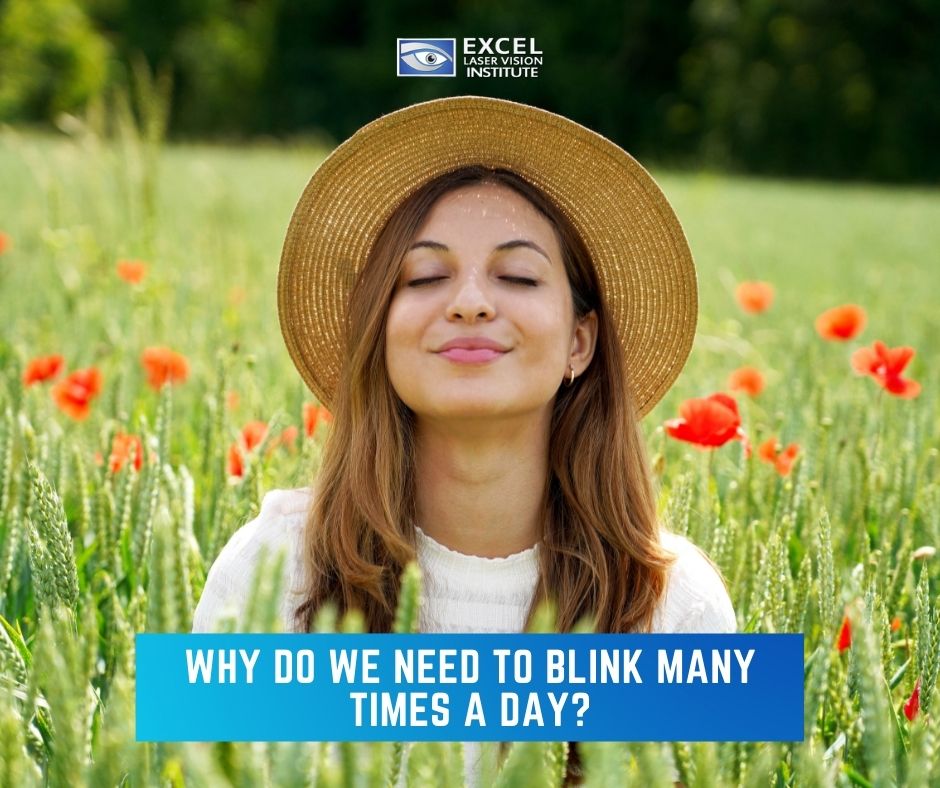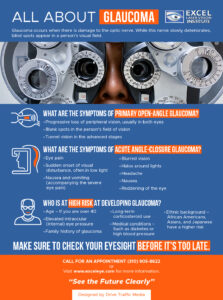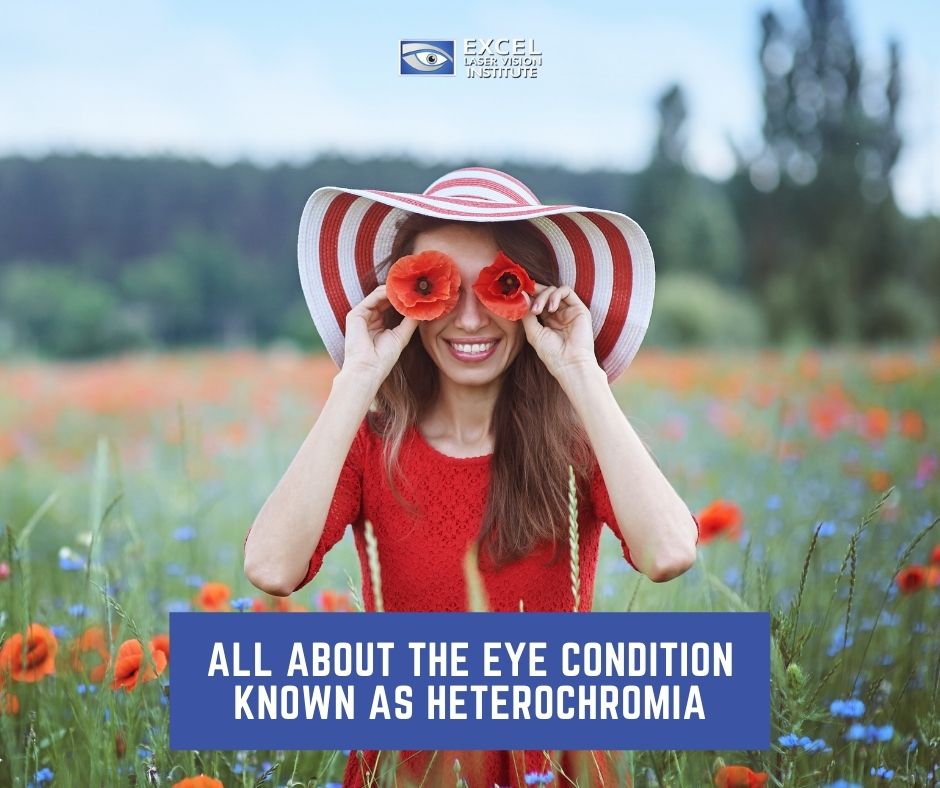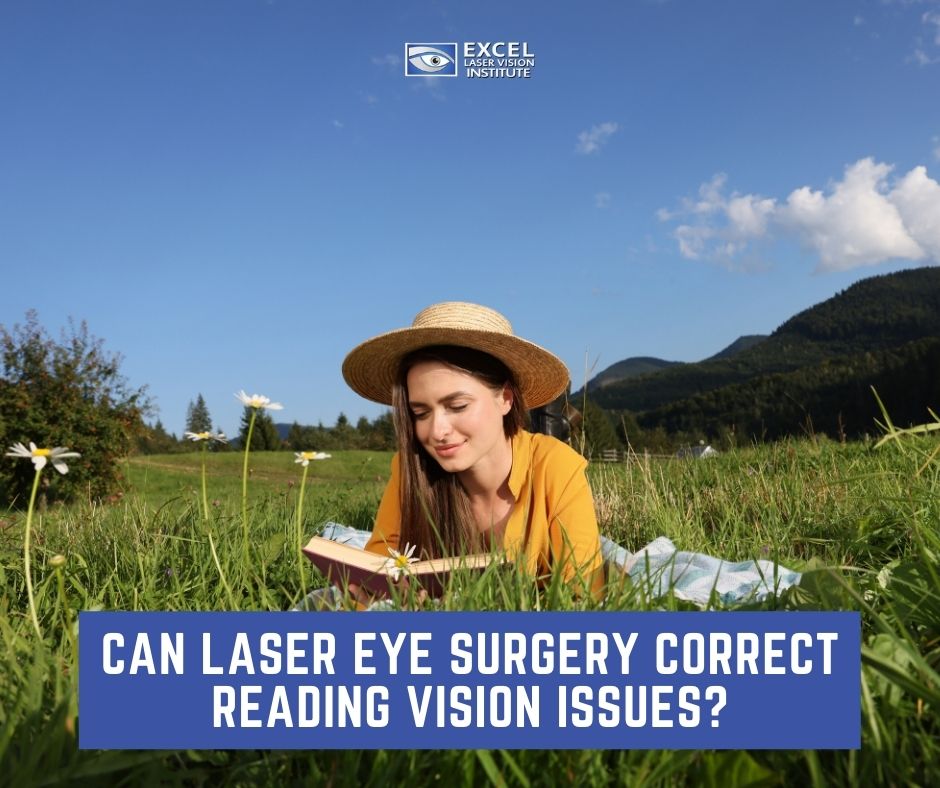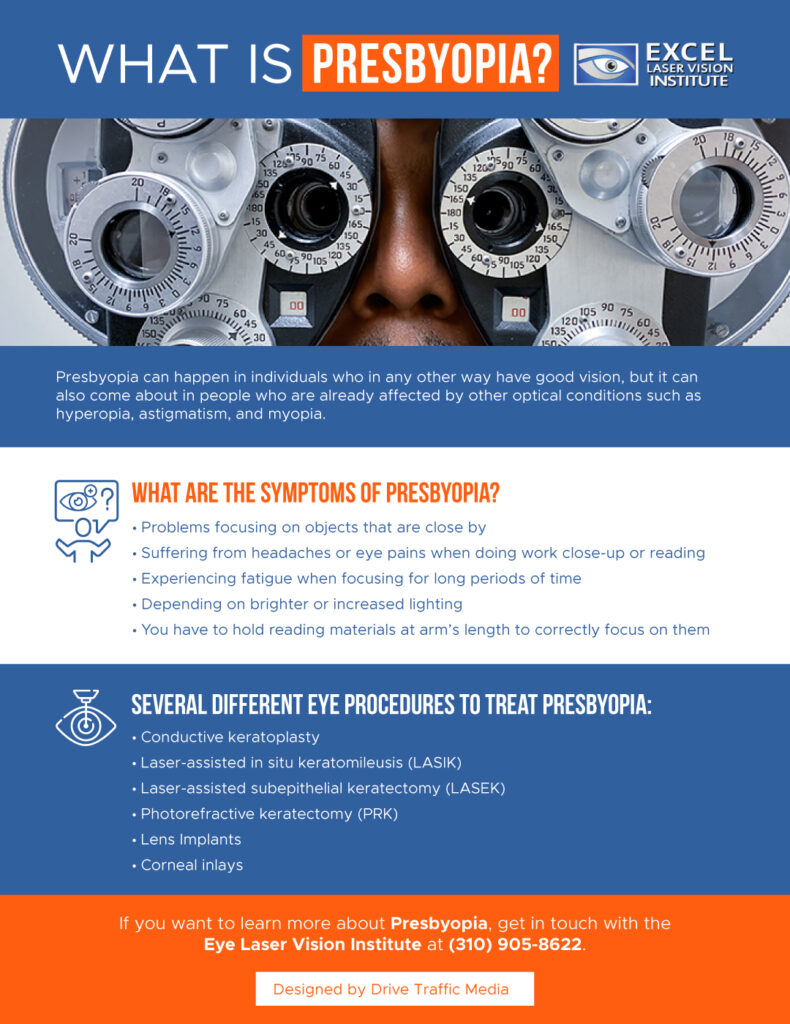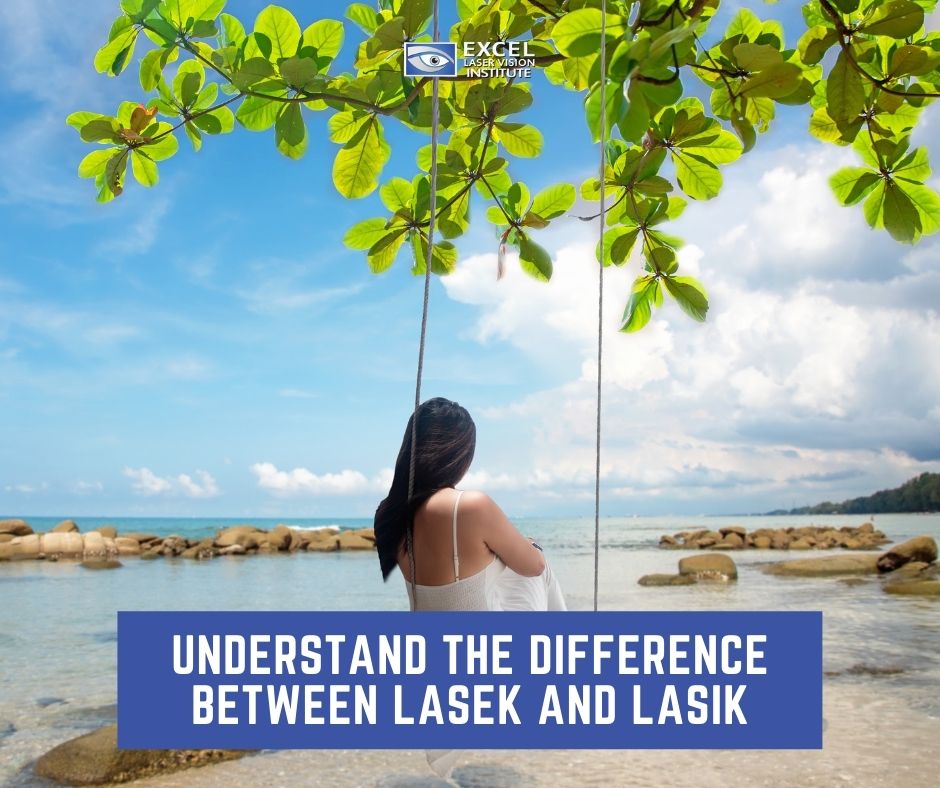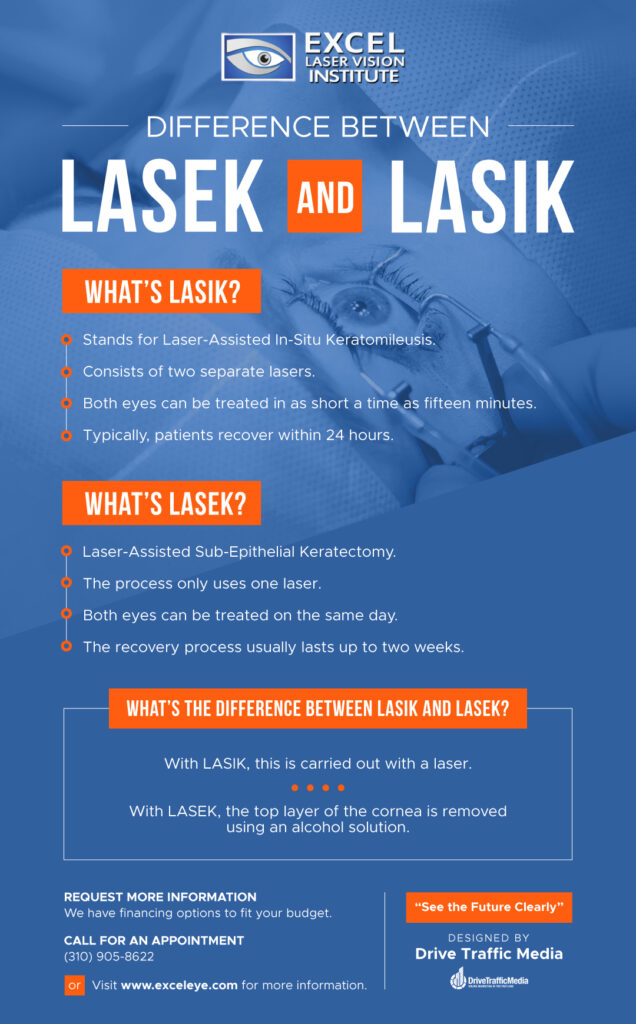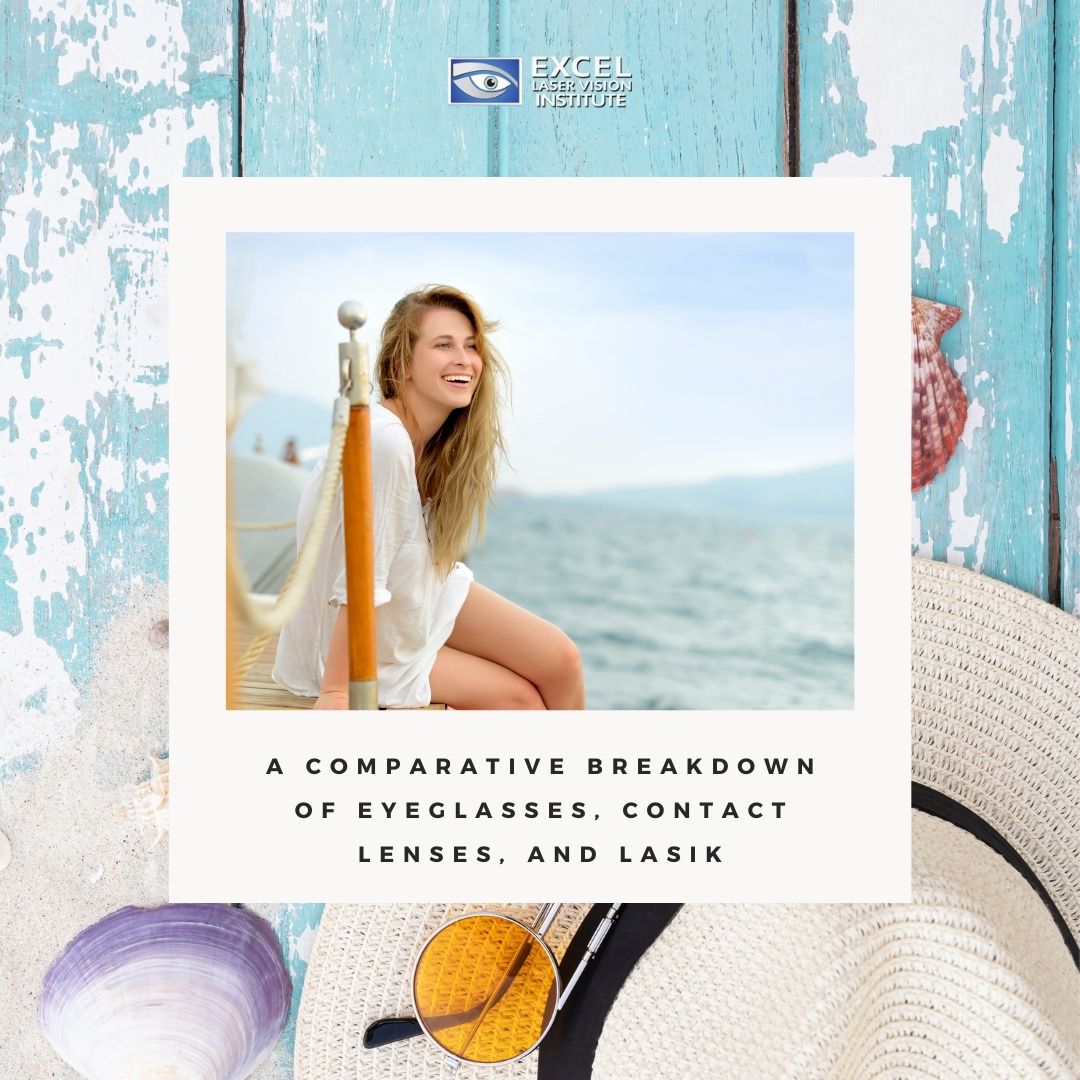
A Comparative Breakdown of Eyeglasses, Contact Lenses, and LASIK
Advantages and Disadvantages
According to the World Health Organization (WHO), there are at least 2.2 billion in the world with some type of vision impairment. In most cases, vision impairment either could have been prevented easily or has not yet been addressed with corrective measures like eyeglasses, contact lenses, or LASIK.
In this article, we’ll be looking at the different ways to correct eyesight and their various advantages and disadvantages.
Eyeglasses
Wearing eyeglasses is the easiest way to correct your vision. In fact, some people even wear eyeglasses despite not having any vision problems—it’s seen as a fashion statement that can complement your outfit, make you look smarter and more knowledgeable, and improve your look overall. There are tons of eyeglasses designs with different shapes, styles, and colors to choose from.
Eyeglasses are also pretty nifty because they’re easy to maintain. If the lenses are dirty, you can wipe them with a clean cloth or even the bottom of your T-shirt. They’re also easy to put on and remove, making it easy to switch to a different pair or take them off right before heading to bed.
The disadvantage to a good old pair of eyeglasses is their inconvenience. You can’t wear them for every occasion—you can’t swim in a pool or ride a roller coaster, for example, and if you get them wet or foggy, you’d need to take them off and clean them before you can see properly again. What’s more, you can’t wear certain things like sunglasses or goggles because of it too.
Additionally, eyeglasses are clunky and ridiculously easy to lose. As a four-eyed person, I can’t remember how many times I’ve acted like Velma in Scooby-Doo and gone out of commission due to losing my eyeglasses. And it’s not like you can slip them into your bag whenever you need to either, as the lenses get scratched and damaged easily.
So, while eyeglasses are certainly quirky and easy to wear, they definitely leave a lot to be desired.
Contact Lenses
Contact lenses are the answers to problems eyeglasses pose.
They are extremely thin films put directly on your cornea—they’re basically your eye’s second skin. You can go about your day-to-day activities and not feel them bothering you, and you can even do things like ride roller coasters and snorkel with contacts on (although it’s not recommended to open your eyes underwater with contacts on)! They also won’t change your appearance, which is good news for anyone who hates the way they look with eyeglasses on.
The downside to contact lenses, though, is how annoying they can be to maintain. Every morning and every night, you need to spend a few minutes putting contacts on carefully, so they’re smooth and aligned perfectly to your iris. You need to soak them in a cleaning solution and store them properly, too, as they get dirty quite easily and can seriously infect your eye. Lastly, contacts can be quite aggravating to those with sensitive eyes and scary for newbies. After all, the idea of something pressed that close to your eye can be intimidating.
LASIK
LASIK is the only permanent solution to vision impairment on this list. It involves cutting into your eye and altering the inner tissues carefully with high-precision lasers.
The best part about LASIK is that it’s, like we said, permanent. Once you have LASIK, your vision is mostly corrected, and any remaining issues can be easily resolved with a few more minor surgeries. Your vision will be as good as new, and you won’t have to wear eyeglasses or contact lenses for the next few years.
Some things turn people off from LASIK, however. For one thing, it can be pretty daunting. Nobody likes the idea of having their eyes cut open and having lasers shot at them. There are also plenty of misconceptions about LASIK—although untrue, many people still believe them.
Additionally, LASIK can be very expensive for some. The cost per eye is somewhere between $1500 and $4000, depending on where you live. With rising prices on everything, it’s definitely a huge investment you can’t take lightly. Some would consider the hassle of eyeglasses and contacts preferable to expensive LASIK costs.
Cost Breakdown
But is LASIK really too much money for what it’s worth? Let’s break it down.
To make things clearer, we’ve calculated the total costs of eyeglasses, contacts, and LASIK in twenty years. Let’s assume that our patient is Samantha, a 25-year-old nearsighted female with a moderate case of astigmatism. She has both eyeglasses and contacts, and her prescription increases every four years. She’s now considering doing LASIK in Orange County, California, where she lives.
Eyeglasses
The national average cost of eyeglass frames is around $250, so Samantha expects to pay at least that much whenever she purchases a new pair. The actual price Samantha pays for her glasses will depend on the eyeglass design she picks (e.g., Target, Ray-Ban, Dolce & Gabbana, etc.), the lenses she picks (e.g., plastic, polycarbonate, bi-focal, etc.), her prescription, and her health insurance coverage.
It will also depend on whatever add-on she chooses—some retailers offer transition lenses, thin and lightweight lenses, blue light protection anti-reflective coating, and hydrophobic coating. That’s not included in the price, so that’s an additional cost.
All in all, let’s say a pair of eyeglasses for Samantha will cost her around $400 with all the bells and whistles.
Now, let’s calculate the doctor’s appointments. Samantha will need to visit her doctor so they can prescribe new eyeglasses for her. Eye exams range from $50 and $250 but are covered by most health insurances, so let’s say this brings down her total expenses to $120. She’ll need to visit the doctor again sometime afterward to check up on her new glasses, adding another $120 to her cost for a total of $240.
Lastly, with a pair of eyeglasses that expensive, she needs to buy the necessary supplies to take care of them! She needs a cleaning cloth, a cleaning spray, and a case to maintain them. The average cost of these on Amazon is around $20 and will last her, say, six months.
So, the total cost for her pair of eyeglasses is $640—$400 for the eyeglasses and $240 for doctor appointments and eye exams. She pays $20 every six months for cleaning supplies.
Contact Lenses
How much Samantha will spend on her contact lenses will largely depend on the kind of contact lenses she uses. Some contact lenses are designed to be replaced and disposed of daily, weekly, or monthly. Some contact lenses increase in price depending on prescription, astigmatism, and add-ons like UV protection. Some contact lenses are more expensive simply because they’re a different color.
We already know that the average cost of doctor’s appointments, eye exams, and fitting sessions is $240 from the last section. You will need to have a prescription before buying contacts.
Now, Samantha would prefer to change her contacts daily as she feels this is more hygienic, and she tells her doctor this. She also wants lenses with UV protection as she lives in very sunny California. So, after a thorough examination of her eye and considering her wishes, Samantha’s doctor prescribes 1-Day Acuvue Moist for Astigmatism.
These contacts come with 90 lenses per pack. Samantha plans on buying a year’s supply as it’s cheaper than buying monthly. As a reference, Walmart offers a yearly supply of these contacts for $340 ($85 per box)—Samantha could still get it for a cheaper price depending on her health insurance and any other discount programs. So, let’s say that Samantha pays $250 for the year’s supply in the end.
Now, she needs to buy a couple of things to keep her contacts nice and clean—firstly, a standard 12 oz. bottle of contact disinfecting solution. A bottle usually lasts one month and costs around $8. Secondly, eye drops to keep her eyes lubricated the whole day. This will cost her around $5 per month. Lastly, Samantha needs a case to keep her lenses protected when not in use—they average around $7 for several pieces.
So, in total, Samantha spends $13 for contact lens care and maintenance, and $7 for cases that need to be replaced every three months.
It’s important to note that people who wear contact lenses are encouraged to visit their doctors yearly instead of bi-yearly. This is because contact lens complications can get serious very quickly due to the delicate nature of the eye.
LASIK
Now, an average LASIK surgeon in Orange County typically charges $1500 to $3000 per eye, so let’s say Samantha is paying $2000 for each eye—$4000—with an esteemed eye surgeon. LASIK isn’t a procedure covered by most health insurance companies in the United States, so she has to pay for this out of pocket.
That $4000 should cover everything from pre-surgery consultation and evaluation, the surgery itself, and any post-surgery check-ups and medications like eye drops. Because her eye surgeon was a good one, she left the surgery with perfect 20/20 vision and does not need any additional surgeries (though even if she did, that $4000 should still cover it).
Her vision has now been permanently corrected. She will not run into any problems for the next twenty years. When she turns 45, she starts experiencing presbyopia, which is the gradual inflexibility of the lens. This is something most people her age goes through and is irrelevant to the effectiveness of her LASIK.
Table of Computations
This is a table of Samantha’s total expenses. Take note that these computations were made assuming Samantha was going to replace eyeglasses every four years and contact lenses every year. This table also assumes that prices will be stable for the entire twenty years—the actual total could be a lot different.
Corrective Measure | Cost Per Purchase | Cost After 20 Years |
Eyeglasses | $400 for eyeglasses + $240 for doctor’s appointments + $160 for miscellaneous = $800 every four years | $4000 |
Contacts | $250 for a year’s supply of contact lenses + $240 for doctor’s appointments + $156 ($13*12 months) for cleaning + $7 for cases = $653 every year | $13060 |
LASIK | one-time payment of $4000 | $4000 |
Analysis
Now, eyeglasses may be annoying to wear at times, it’s probably the most budget-friendly option here. If taken care of properly, they can last up to four years, and the total cost in twenty years is easy to pay as you don’t have to pay all of it at one time. Additionally, this computation assumes Samantha pays for high-quality eyeglasses with extra perks—you can totally get a pair that’s cheaper if you find that easier.
Contact lenses are the most expensive as it needs takes a lot to care for them. They need constant cleaning, constant replacing, and constant trips to the doctor because of how dangerous improper maintenance of contact lenses can be. In twenty years, you’ll have spent more than three times as much as you had spent on eyeglasses!
Lastly, while LASIK is the most expensive option in this article, you can’t deny that it’s a great investment. In twenty years, Samantha will have completely made up for the LASIK eye surgery cost, and all that without visiting the eye doctor regularly, getting new prescriptions every year, caring and maintaining for eyeglasses and contacts, and other hassles that they bring. With LASIK, she will have little to no issues for the next twenty years.
Conclusion
Eyeglasses, contact lenses, and LASIK offer various advantages and disadvantages depending on your prescription, financial capabilities, and preferences. If you’re looking to correct your vision and are currently weighing your various options, we hope that you can look to this article to find your best bet.
As an expert on LASIK in Orange County, Dr. Ferzaad Moosa would no doubt recommend laser eye surgery. It’s quick, painless, convenient, and a good bang for your buck. If you’re interested in learning more about LASIK, including questions about the process, costs, and health insurance coverage, feel free to contact our clinic at (n310) 905-8622 or at our website.


How Poor Vision Can Impact Learning
We have all heard of the three predominant learning styles, visual, auditory, and tactile – but what about people who may learn best visually but cannot see very well? It doesn’t take a doctor to know that it can be more difficult to learn if you have poor eyesight. According to research, 65 percent of the general population are visual learners. So in a sense, a majority of people truly need to “see it to believe it.” If you learn better by seeing things but were not blessed with the best vision, you may find that you are not reaching your full potential in your academics or in your professional life. This is where you may turn to LASIK surgery in Los Angeles to solve the problem.
You may try to compensate for your low vision by trying the other learning methods, possibly if the conversation about the cost of LASIK eye surgery sends a shiver down your spine. While some people may be able to work with multiple learning styles, it may or may not be the case for you. Perhaps you find it difficult to read directly from a textbook and you do not enjoy audiobooks or there are none available. Studies have proven that having bad eyesight also directly impacts one’s ability to retain information. “Blurry vision equals blurry brain,” says Dr. Lynn Greenspan, an optometrist based in Elkins Park, Pennsylvania. “With bad input, the brain doesn’t receive a complete picture and needs to work hard to fill in missing details.” It goes without saying that if you have difficulty remembering new information, then learning new information will serve as a particularly tall order for you. Those who struggle with memory have also been found to have more emotional health issues. A 2016 Japanese study found that those who chose to undergo LASIK “significantly improved vision-related psychological concern and physical function,” this increasing patients’ HRQOL (health-related quality of life). Think of it this way, after undergoing Los Angeles laser eye surgery, you will no longer have to worry about forgetting or losing your glasses. You can walk out of the house feeling more confident than you ever have before!
So if you have always wanted to enhance your eyesight, then you are in good company. Perhaps you are a current post-secondary school student, whether you are an undergraduate, a graduate student, or in a doctorate program, who wants to enhance your vision so that you can perform more accurately in your studies. You might be tired of the glasses or contacts you have grown accustomed to wearing since your childhood. If so, you have come to the right place. Please reach out to us by calling our staff at (310) 905-8622 for a free Los Angeles LASIK consultation. We strive for the highest quality of professional service for every patient who visits our offices. With 23 years of excellence provided by Dr. Moosa and his team, we firmly believe the decision to get Los Angeles LASIK eye surgery with us can be one of the best decisions you will make for yourself for years to come.
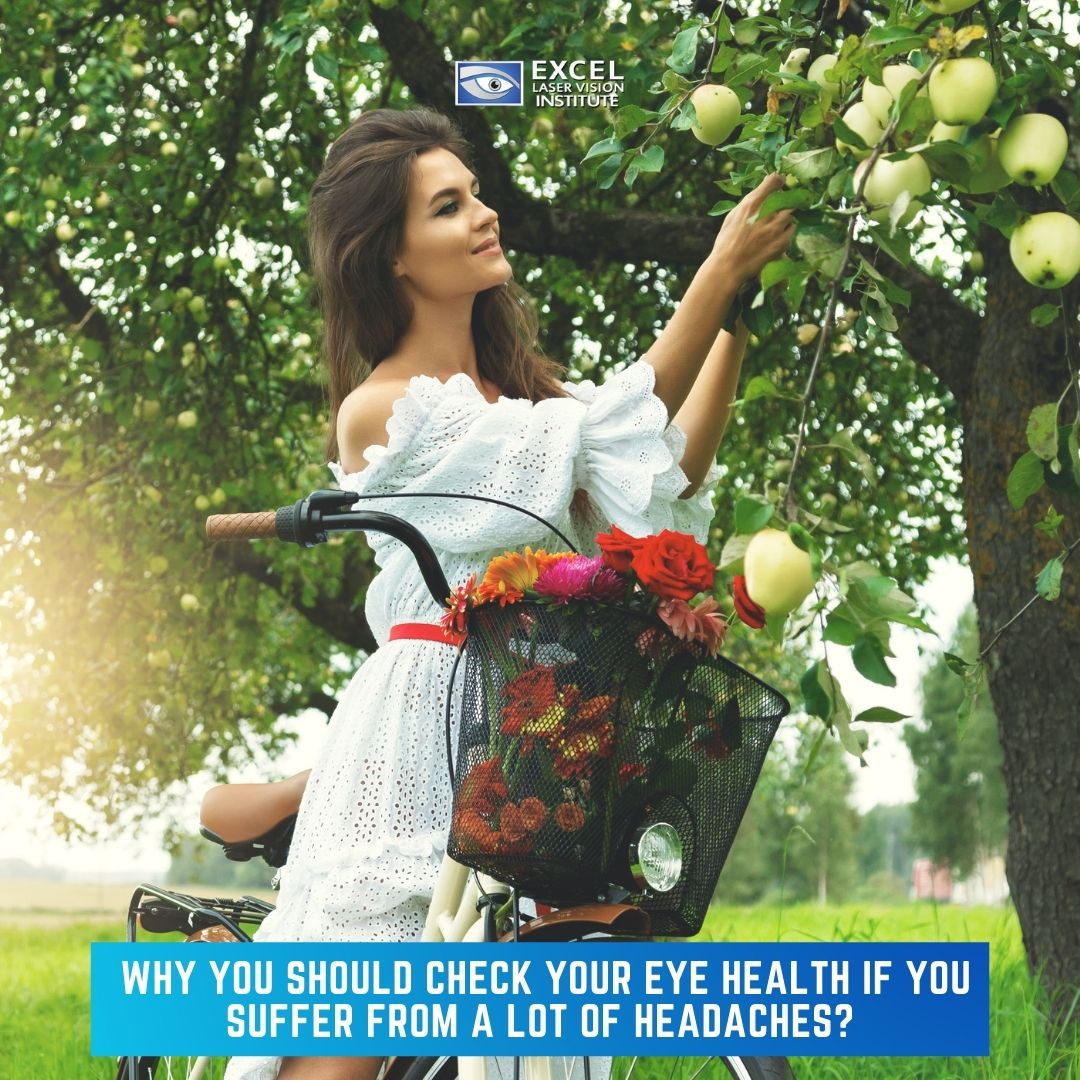
Why You Should Check Your Eye Health If You Suffer From a Lot of Headaches
Headaches are a common pain that many people experience from time to time. However, having pain behind your eyes can wreak havoc in your life especially when you got a lot of things to do. If you often have a headache or even every day, that regularity may mean there is something more serious lurking.
If you have a lot of headaches, book an eye exam right away, and you should see if you can rule out any vision problems as a cause. Headaches are not always linked to vision issues, and every vision problem does not cause headaches, but there is a considerable connection between the two.
If your headaches have caused you to change your routine, you should make your doctor aware of this. He or she will consider your situation and prescribe a treatment based on what could be triggering your headaches, symptoms, and pain location.
What Is A Headache Behind The Eyes?
It is not uncommon for people to complain about headaches behind the eyes, and they may arise from underlying health problems ranging from eye strain to migraine.
When you have pain behind the eyes, it can affect one or both sides and may happen with light sensitivity and other kinds of discomfort. A doctor can recognize the cause of a headache behind the eyes and suggest the most suitable form of treatment.
Here is some more information about what causes headaches behind the eyes and how to treat them.
Migraine
About 16% of adults in the United States suffer from a common condition known as migraines.
A migraine headache can bring about extreme pain on one side of the head, sometimes behind one eye. This pain can last around 72 hours.
Besides a migraine headache, a person may experience:
weakness
dizziness
nausea and vomiting
sensitivity to light and sound
mood changes
visual disturbances, known as aura
What Causes Migraines?
Doctors are not sure what causes migraines. Nevertheless, modifications to nerve signaling and blood vessels in the eye may be involved in its development.
Exterior triggers are usually the catalyst for migraine attacks. Typical migraine triggers include:
hormonal changes
lack of sleep
dehydration
environmental factors, such as smoke, strong smells, or flickering lights
consuming too much caffeine or alcohol
strong emotions, such as stress or anxiety
Eye Strain
Technology has brought a new type of eye issue known as computer eye strain, also referred to as digital eye strain and even computer vision syndrome. It’s an umbrella term that consists of several vision-related conditions. People sometimes experience discomfort in their eyes because they focus on electronic screens for long periods.
Apart from discomfort in one or both eyes, a person that spends immense, undisrupted periods looking at screens or digital devices may experience any of the following symptoms:
headaches
dry eyes
neck and shoulder pain
blurry vision
An individual may only feel discomfort behind their eyes after staring at digital screens for long periods, and symptoms may improve when they stop doing so. Nonetheless, the prevalence of these computer-related symptoms is increasing quickly, and if a person keeps experiencing symptoms, they may need medical assistance.
What Causes Eye Strain?
Concentrating and reconcentrating on a screen for a long time can cause eye strain, resulting in vision issues.
A person will usually experience eye strain after concentrating on a single object or task for a long time. Also, dimly lit areas and exhaustion can cause eye strain.
Sinusitis
Sinusitis occurs when there is inflammation or congestion of the sinuses, and this can produce pressure, causing pain behind the eyes. Susceptible to the location of the inflammation, sinusitis may cause pain behind both or either eye.
Additionally, sinusitis can cause pain and pressure in other parts of the face, for instance, the cheeks and forehead.
Other common symptoms of sinusitis include:
fatigue
nasal congestion
aching in the upper teeth
pain that worsens when the person is lying down
Sinusitis is a common condition, and pain will usually clear up when the overall congestion does. This will often take two to three weeks.
What Causes Sinusitis?
Commonly, sinusitis occurs when allergies or a virus get trapped within the sinuses due to congestion, which can result from face pressure and headaches. Plus, sinusitis may have bacterial or fungal causes, even though these are often linked to immune deficiencies, such as HIV.
Also, nasal polyps and dental surgery can result in sinus pain and pressure.
Cluster Headaches
When a person has one to eight brief, but painful headaches over a day, they probably had a cluster headache.
These headaches are painful and happen on one side of the head. This may be a reaction from sharp or dull throbbing pain behind only one eye.
Frequently, additional symptoms develop on the same side as the headache.
These symptoms can include:
a stuffy or runny nostril
flushing
sweating
The time at which a person experiences cluster headaches is different for every one. However, it is not unusual for people to experience them at night.
What Causes Cluster Headaches?
Medical professionals do not know what causes cluster headaches, and there has not been a lot of research about them, even though these headaches are not uncommon.
Typically, researchers believe that more males usually experience cluster headaches than females. Also, there may be a genetic component, and some people probably have a higher risk than others.
Tension Headaches
Most of the time, people experience tension headaches, which are more common in females than males.
A few people experience tension headaches one to two times per month while others experience them more frequently. If this goes on for three months or longer, doctors consider these headaches chronic.
Typically, tension headaches cause pain behind both eyes and a sensation of pressure around the forehead. They can happen at any time and can last from 30 minutes to several hours. In severe situations, a person may experience symptoms of a tension headache for several days.
Plus, a tension headache can cause sensitivity in the scalp. Tension headache pain may be dull, happen in the forehead, and go along the neck.
What Causes Tension Headaches?
Tension headaches develop for a variety of reasons, including:
stress
lack of sleep
staring at a screen for a long time
driving long distances
muscle contractions in the neck or head
What Are Good Treatments For Headaches Behind The Eyes?
You can get over-the-counter pain medication to alleviate mild or moderate headaches, but prescription medication may be needed when the pain is severe.
A doctor may prescribe antiseizure medications, antidepressants, or oral birth control pills as preventive measures for people who experience frequent migraine headaches. An individual can get relief from a migraine episode by resting in a darkened room. Also, putting a cool, damp towel over the eyes may help too.
Muscle relaxants are a short-term alternative for the management of tension headaches.
If a person has headaches caused by bacterial sinusitis, a doctor will probably prescribe antibiotics. However, nasal decongestant sprays are a good option if an allergy or viral infection brings about sinusitis.
Try to schedule time for a regular eye exam whenever you can, especially if you’ve been suffering from frequent headaches and don’t know what is causing them.
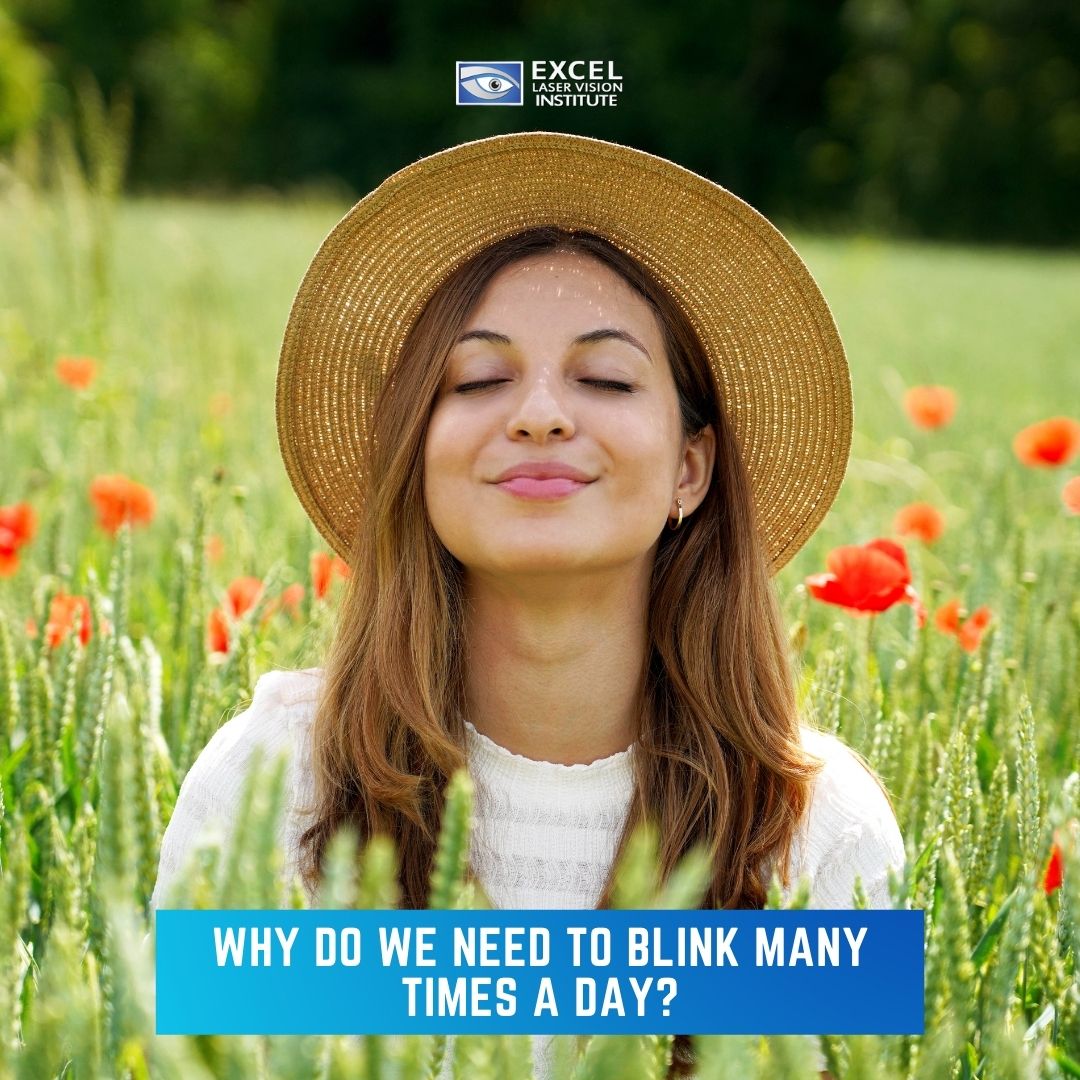
Why Do We Need to Blink Many Times a Day?
Many of us in our younger years have been in a staring contest. Remember how difficult it was to keep your eyes open for such a long time? Eye doctors tell us it is because of our natural instinct to blink. However, what are the reasons behind our need to blink?
Apparently, there are two main reasons for blinking. First of all, blinking clears away particles from the eyes. For instance, if there is a foreign body in the eye, it helps to remove it. Sometimes particles get under the eyelid or else something blew in. Also, this can feel very painful since there are many nerve endings in the cornea.
Secondly, blinking helps to lubricate the eyeballs. The eyes need a smooth surface for light to correctly focus on, so vision doesn’t get blurry. Bling brings out a tear film, which usually consists of water, mucus, and oil to maintain a smooth eyeball surface. Also, it prevents the eye from drying out which can feel uncomfortable. Typically, when your eye has a large area of dryness, it kind of feels like a scratch on your cornea, the eye’s outer protective layer.
Secondly, blinking lubricates the eyeballs. The eyes require a smooth surface for light to focus properly, so you don’t have blurry. Blinking releases a tear film — which mostly includes water, oil, and mucus — to maintain a smooth eyeball surface. Also, it stops the eye from drying out, which can be uncomfortable. When there is a large area of dryness, it feels similar to a scratch on the cornea, – the eye’s outer protective layer. This can be very distressing since there are many nerve endings in the cornea.
Why Is Blinking So Important?
Our eyes have to blink several times every minute, but do you completely understand why it’s so critical for optimal eye health?
You can time yourself for a minute and notice how many times you blink. On average, adults blink between ten and twenty times per minute, with each blink lasting a tenth of a second.
When We Blink, Our Eyes Get Cleaned And Refreshed
Each time our eyes blink, they spread fresh layers of tears throughout the eyes’ surface, preventing them from drying out and removing small irritants such as dirt and dust particles that could obstruct vision. When the eyes have too much moisture, the excess tears drain out through the very small holes at the corners of the eyes (the tear ducts) and down into the nasal passages. So, if you have ever asked yourself why your nose usually runs when you cry, now you understand its cause!
We Usually Blink Less When Focusing
Occasionally, when we are fixating on something such as a game, book, project, or TV show, the eyes usually blink less than usual. As a matter of fact, as little as three times per minute. That’s a lot lower than the healthy rate of blinking our eyes depends on carrying out their job effectively. If the eyes go a long time with less than normal blinking, it risks dry eye or eye strain.
Make Blinking More A Habit
Sometimes not blinking enough can lead to eye issues, especially when you’re doing something that needs you to focus. So, try to make a conscious effort to blink more. If you work on it continuously, you can train your eyes to blink a lot more out of habit. To force yourself into the habit of blinking more, you could even set reminders to do blinking exercises every hour. You will soon find that you won’t need reminders anymore. An excellent, simple exercise to help maintain fresh feeling eyes is to close them, wait a moment, squeeze your eyelids, and then open them again.
The Systems Behind Blinking
Although blinking seems to be a very simple thing to do, it needs a lot of various mechanisms working together harmoniously in our eyes and eyelids, including different types of tear production, tiny glands making oil to refill the film that prevents our tears from drying out, and many assorted sets of muscles to carry out the physical movement of blinking. Several things can go haywire when there are so many moving parts. If you have dry eyes or eye strain and blinking exercises are not doing it for you, talk to your eye doctor at Excel laser Vision Institute!
How To Blink Your Eyes
Yes, indeed, there is the right way to blink your eyes! As you know by now, the purpose of blinking is to refresh your eyes by moistening them with protein-rich nutrients, cleaning them of any foreign objects, and giving them the much-needed lubricant they require. This may sound like a lot to ask from just one blink, but those are the advantages of this straightforward action.
To blink correctly and efficiently two factors have to happen: closing the eyes completely for a short moment and using the correct eye muscles.
The muscles that are used for blinking are situated above the eyes. To ensure you are using these muscles instead of facial muscles, place your fingers at the corners of your eyes by the temples. Close your eyes. You should not sense any movement under your fingers if you used your eye muscles.
Once you close your eyes, pause. This step is vital since if you want the blink to be effective, the eyes have to be completely closed. You can quickly test this by placing a finger under your eye, just above the cheekbone. When you close your eyes, you should sense your upper eyelashes touch your finger.
Advantages Of Blinking
When you become an expert on the blink technique, you are set to get the perks. During the blink, protein-rich moisture coats your eyes, providing them with essential nutrients. Also, this liquid cleans the eyes, getting rid of any dirt or debris. Plus, an oily substance is discharged, which helps prevent moisture from evaporating too rapidly while also lubricating the eyelids to stop chaffing.
How does all this happen? When we blink, we squeeze the glands in the eyes that create these liquids. Therefore, nourishment, cleansing, and oily lubrication are common results of the glands releasing this needed tear film. However, it only occurs when the eyes are completely closed in a full blink.
Blink More And Properly
No doubt, you now know that the blink has tons of benefits, but unfortunately, you may not be receiving the complete blink treatment. Most of the blame is placed on our digital devices, and although research has revealed that many of us blink about the same number of times when reading on the computer screen or from printed material. However, the difference is how they blink.
Many people had incomplete blinks while reading from a computer monitor. This can bring about eye strain and fatigue just because the eyes are not receiving the nourishment and cleansing linked with a blink.
In a perfect world, a person should blink their eyes around fifteen or thirty times per minute, and the blinks should be as soft as butterfly wings opening and closing. When you become more self-conscious of how often you blink, your thoughts will become a subconscious habit that helps your eyes.
So, make each blink matter. Here are a couple of things to keep in mind.
Blink your eyes regularly. Place a “Blink More” note on your computer to help you remember. Digital eye strain is becoming very common and can be simply rectified with regular blinking.
Practice a complete blink. You can blink naturally and correctly when you know what a full blink feels like.
Close your eyes for a short moment now and then when reading or on the computer. This will not only give you the advantage of a blink but will provide your eyes with a quick rest.
So much good can happen in the blink of an eye, but you have to be conscious of when and how you blink your eyes to get the full benefits.

How To Get Your Eyes Ready for the Allergy Season
Many eye doctors will tell you that eye allergies will affect many people at some point in their lives. Still, unfortunately, some people will suffer more than others when it comes to eye allergies, particularly during the Spring through Fall months. Most ophthalmologists specialize in treating many eye conditions and serve the requirements of individuals looking for eye care.
The warmer weather and longer days bring some dangers to your eyes and vision. The springtime bloom causes red, swollen, and itchy eyes. Also, there’s an increase in sun damage because of sun exposure, so it is important to protect your eyes this spring season.
What Are Common Eye Allergy Symptoms?
While the pollen, dust, and dander start a ruckus outside, so do your allergies. Although some people just suffer from sneezing or maybe even sometimes a stuffy nose, others experience allergies that affect their eyes, which makes springtime a horrible moment for them.
If your eyes become so red and itchy that you notice a puss-like discharge from your eyes, you should get an eye exam immediately. In fact, it is not uncommon for people to mistake an infection for allergies.
However, with the right precautions, you can reduce the discomfort of increased allergens and sun exposure. Here are some handy tips to follow this Spring for healthy eyes.
Common Eye Allergy Symptoms
Redness
Burning
Itching
Clear or watery discharge
Blurred vision
What Causes Seasonal Allergies?
So many things, from dust to perfume to pet dander, can cause allergies, and they aren’t always restricted to a specific year. Nevertheless, Spring and fall are usually worse because of the pollen. Some plants such as grass pollinate in the Spring, while others such as ragweed pollinate in the fall.
During these months, the air becomes full of tiny floating particles that can get into our eyes and airways which causes irritation. If you are a person with an overactive immune system , you will probably experience symptoms such as itchy eyes, congestion, and persistent sneezing.
The most common triggers of eye allergies include:
Outdoor Allergens – Pollens, mold, and dust from trees, weeds, flowers, and grass.
Indoor Allergens – Pet dander, mold, dust mites, and indoor plants.
Irritants include perfumes, cigarette smoke, cosmetics, eye drops, or exhaust fumes.
To be clear, food allergies and insect bite allergies do not affect the eyes like airborne allergens.
How Do Eyes Respond To Allergens?
Normally, allergy symptoms include redness, itchiness, and watering of the eyes. Sometimes it comes with a gritty feeling, swollen eyelids, a burning feeling, and increased discomfort with contact lenses. You can ease these symptoms with decongestants since they help with respiratory symptoms. However, a side effect is sometimes that they dry the eyes out, making the eye symptoms worse and leaving the eyes more susceptible to airborne irritants.
How To Protect Your Eyes This Spring?
A good way to protect your eyes this Spring is to reduce your exposure to the dander, dust, and pollen that causes red, swollen, and itchy eyes. Allergens can appear any time of the year but really intensify in the Spring. These tiny floating particles get inside your home and rapidly irritate your eyes.
Here are some methods to lower allergens inside your home:
Take a look at your HVAC system and make sure the air filters are working and clean.
Routinely clean your home by mopping, sweeping, and dusting.
Do your best to keep your windows closed as much as possible.
Don’t place fans near windows that could blow pollen inside.
Wearing Clean Clothes Helps
Clothes attract airborne pollen and dust particles, and they attach themselves to your clothing, shoes, shoelaces, hats, or anything that you are wearing. A good method of minimizing these allergens in your home is to wash your clothes regularly. Also, do not overlook cleaning your shoes too.
Eye Drops Help To Clear Your Vision
Typically, dry eyes are one of the symptoms of pollen and dander allergies. Making sure your eyes are moist and flushed is the most effective way to avoid red, itchy, and dry eyes.
You should use good quality preservative-free artificial tears or eye drops that help to lubricate the eyes to relieve you of allergy symptoms. Also, artificial tears are an excellent all-year-round product to have on hand if you are a contact lens wearer to prevent them from drying out. Occasionally medicated or prescription eye drops may be required to alleviate ocular allergies.
It’s best to visit your optometrist to first get diagnosed and begin the proper allergy medication to have your feeling brand new again.
Wear Sunglasses
Sunglasses are more than just a fashion statement since the sun comes along with the warmer spring weather. The increased time outdoors exposes you to more allergens and more of the sun’s harmful UV rays.
Sunglasses protect the eyes by adding a barrier between the pollen floating around in the air and your eyes. The bigger the sunglasses you wear, the more protection you will have! Also, UVA/UVB sunglasses filter out harmful rays and make sure your eyes stay healthy.
When dirty hands touch your eyes, it can cause infections as well as overall irritability. Plus, sunglasses lower how often you touch your eyes.
If you wear prescription glasses, discuss with your optometrist about prescription sunglasses so you can see clearly as you protect your eyes.
Wear Glasses Rather Than Contacts
Pollen and other allergens easily accumulate and get stuck on your contact lenses during the Spring. This can worsen your symptoms and extend your suffering. If you can, wear your glasses as much as you can to give your eyes a rest. You will lower the accumulation of pollen particularly when outdoors.
If you can’t remove your contacts or wear glasses, try cleaning them more than usual in an eye contact solution. This will get rid of any gathered allergens and lubricate them simultaneously.
Go For Routine Eye Check-Ups
Last but not least, to make sure eye allergies don’t spoil your spring season, you should schedule regular eye examinations with your eye doctor. If you are sensitive to allergy symptoms, an optometrist can use preventive measures to prepare you for whatever Spring has up its sleeve.
Treatments For Common Eye Allergies
Swollen Eye
Swollen eyes or eye swelling occurs when the person suffers from a lack of sleep or has an allergic reaction. A swollen eye happens because of fluid retention in the eye, and it can be concerning and also very painful. You can sometimes treat a swollen eye at home. Nevertheless, if the eye condition becomes agonizing, chronic, or chronic, it is highly recommended that you visit your eye doctor immediately.
Allergic Conjunctivitis
This is a condition that happens when the eye becomes sensitive or inflamed, and can even be painful. The treatment of this condition needs both prevention and treatment. Individuals who suffer from very intense allergies that regularly cause this problem must avoid open-air during allergy season and have their allergy drops on hand and possibly other medications such as antihistamines. steroid eye drops may be needed for those with recurring conjunctivitis.
Swollen Upper Eyelid
Another common indication of conjunctivitis is that a swollen eyelid can be uncomfortable, but many prefer a swollen eye. Like eye swelling, those who develop this condition frequently need to take preventative measures to avoid allergens and be prepared with allergy eye drops and other medications.
Itchy Watery Eyes
Itchy eyes and watery eyes are typical symptoms of mild to moderate eye allergies. Watery eyes can be tricky if the wateriness is severe, especially if you have to operate machinery. Itchy eyes will usually be followed by watery eyes and can be really annoying. Simple medications such as allergy eye drops can help. It is mainly essential to avoid rubbing your eyes with your hands or with anything that may not be sanitary.
Your eye doctor at Excel Laser Vision Institute recommends using suitable products and medications to help relieve symptoms and prevent them from becoming more severe. Prolonged eye irritation can result in eye issues and infections if left untreated.
So, don’t put your eye health at risk. Book an appointment and get a head start on a clean, comfortable, and allergy-free spring season.
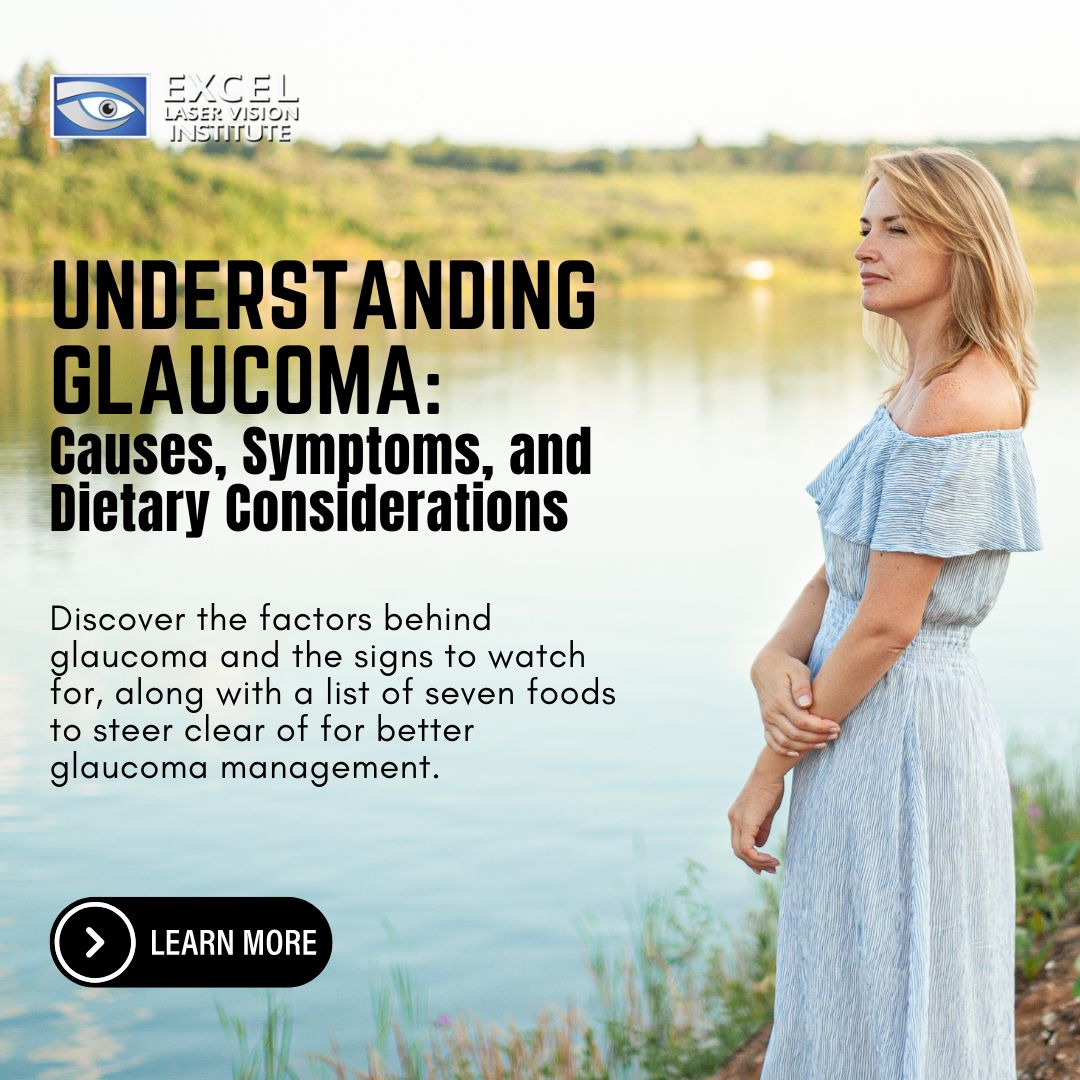
Understanding Glaucoma: Causes, Symptoms, and Dietary Considerations
On average, the eye doctors tell us that about three million Americans have glaucoma, however, only half of them know it.
Unfortunately, glaucoma is an eye disease that eye doctors at the best laser eye surgery orange county don’t take lightly because it’s the second leading cause of vision loss and blindness in the world. The two most common forms of glaucoma that patients have are Primary Open-Angle Glaucoma and Acute Angle-Closure Glaucoma.
What Causes Glaucoma?
Glaucoma occurs when there is damage to the optic nerve. While this nerve slowly deteriorates, blind spots appear in a person’s visual field. The medical community still doesn’t understand why the optic nerve becomes damaged, but it could be related to increased pressure in the eye.
Elevated eye pressure usually comes about because of the accumulation of fluid, known as aqueous humor, that moves throughout the inside of the eye. This internal fluid usually drains out by way of a tissue called the trabecular meshwork at the angle where the iris and cornea come together. When too much fluid is produced or the drainage system doesn’t work correctly, the fluid can’t move at its normal pace, and eye pressure increases.
Typically, glaucoma runs in families. Also, scientists have been able to find genes in some people that are related to high eye pressure and optic nerve damage.
What Are The Symptoms of Primary Open-Angle Glaucoma?
The eye doctors usually call open-angle glaucoma “the silent thief of sight” since it has no symptoms until permanent vision loss has happened. Symptoms in advanced stages of the disease consist of the following::
-
Progressive loss of peripheral vision, usually in both eyes
-
Blank spots in the person’s field of vision
-
Tunnel vision in the advanced stages
Regular eye exams are critical to detect this type of glaucoma early enough to successfully treat the condition and prevent further loss.
What Are The Symptoms Of Acute Angle-Closure Glaucoma?
An angle-closure glaucoma is an uncommon form of glaucoma, which develops very rapidly and requires immediate medical attention.
It’s the complete opposite of open-angle glaucoma since the symptoms of acute angle-closure glaucoma are very noticeable and damage happens quickly. If you experience any of these symptoms, seek immediate care:
-
Eye pain
-
Sudden onset of visual disturbance, often in low light
-
Nausea and vomiting (accompanying the severe eye pain)
-
Blurred vision
-
Halos around lights
-
Headache
-
Nausea
-
Reddening of the eye
Who Is At High Risk At Developing Glaucoma?
On account of the fact that chronic forms of glaucoma can harm a person’s vision before any signs or symptoms are noticeable, take a look at this list of higher risk factors:
-
Age – If you are over 40
-
Elevated intraocular (internal) eye pressure
-
Family history of glaucoma
-
Ethnic background – African Americans, Asians, and Japanese have a higher risk
-
Long-term corticosteroid use
-
Medical conditions – Such as diabetes or high blood pressure
7 Foods to Avoid When You Have Glaucoma
While various factors contribute to the development and progression of glaucoma, including genetics and increased intraocular pressure, certain dietary choices may impact the condition. While there is no specific glaucoma diet, some foods and lifestyle habits are generally advised for those with glaucoma. Here are foods that individuals with glaucoma may consider avoiding or limiting:
High-Sodium Foods
Excessive salt intake can eventually lead to increased blood pressure, which, in turn, may contribute to elevated intraocular pressure (IOP). Individuals with glaucoma are often advised to limit their sodium intake to help sufficiently manage their condition. Processed foods, canned soups, and salty snacks should be consumed in moderation.
Caffeine
Some studies suggest that caffeine may temporarily increase intraocular pressure. While the evidence is inconclusive, individuals with glaucoma may choose to monitor their caffeine intake. This includes coffee, tea, energy drinks, and certain caffeine medications.
High-Sugar Foods
Diets high in sugar have long been associated with various health issues, including diabetes. Individuals with diabetes have a considerably increased risk of developing certain types of glaucoma. Therefore, managing sugar intake is essential for overall health and potentially for glaucoma management.
Fried and Fatty Foods
High-fat diets may contribute to obesity and other health problems, indirectly affecting eye health. Fried and fatty foods, particularly those high in trans fats and saturated fats, must be limited. Instead, individuals are encouraged to include healthy fats like omega-3 fatty acids typically found in fish, flaxseeds, and walnuts.
Processed Foods
Processed foods often are packed with unhealthy additives, preservatives, and trans fats. These can contribute to inflammation and other various health issues that may indirectly impact eye health. Opting for fresh, whole foods is generally a better choice.
Alcohol
Excessive alcohol consumption can be causation for dehydration and may impact the body’s ability to regulate intraocular pressure. Individuals with glaucoma should moderate their alcohol intake and stay well-hydrated.
High-Glycemic Index Foods
Foods with a high glycemic index can cause rapid spikes and crash in blood sugar levels. Maintaining stable blood sugar levels is crucial for overall health, including eye health. Choosing low-glycemic index foods like whole grains, fruits, and vegetables may be beneficial.
Conclusion
Glaucoma, a group of eye conditions causing optic nerve damage, necessitates attention to dietary choices. While not a substitute for medical care, avoiding or limiting certain foods may aid in managing the condition. High-sodium foods linked to increased blood pressure and caffeine, which might temporarily elevate intraocular pressure, should be moderated. Diets high in sugar pose risks, particularly for those with diabetes, increasing the importance of managing sugar intake. Limiting fried and fatty foods and processed items with unhealthy additives and moderating alcohol consumption contribute to a comprehensive approach.
Additionally, it’s important to note that while dietary choices may play a role in managing overall health and potentially influencing glaucoma, they are not a substitute for medical treatment. Regular eye check-ups, prescribed medications, and lifestyle modifications should be discussed with an ophthalmologist or healthcare professional to craft a comprehensive plan tailored to individual needs. Everyone’s health needs are unique so that specific dietary recommendations may differ from person to person. Always consult a healthcare provider for specialized advice based on individual health conditions and concerns.
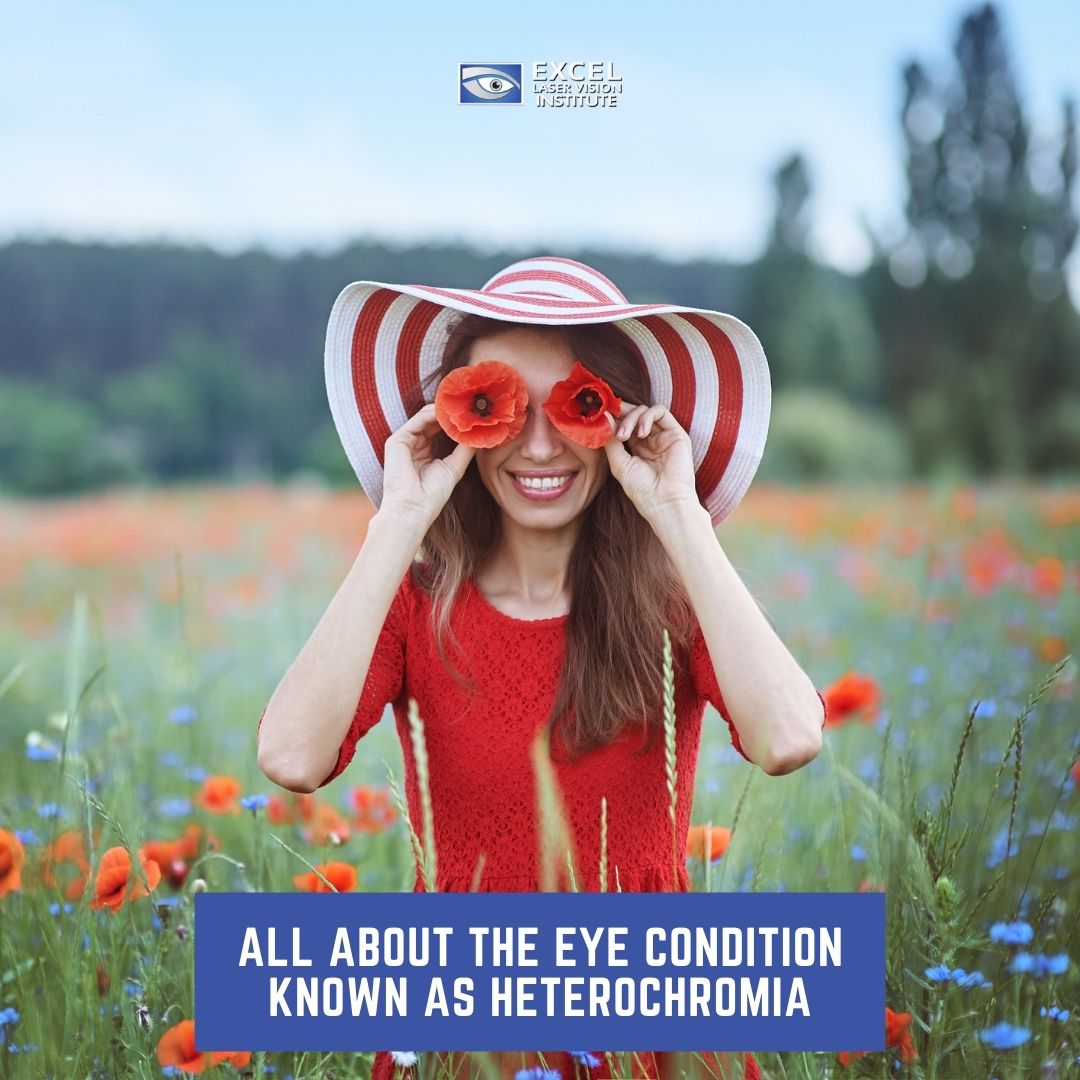
All About The Eye Condition Known As Heterochromia
On average, many patients admit that the first thing they notice about a person when they first meet them is their eye color. An alluring pair of eyes can make a lasting impression, but the most memorable are most likely the ones that are not the same.
The scientific term that refers to mismatched eye colors is heterochromia. Typically, a vet sees heterochromia in cats and dogs, but it happens in only three out of every five hundred people. Also, the eye doctors tell us that there are a few various causes and types of heterochromia.
What Are The Different Types Of Heterochromia?
Well-known examples of heterochromia are Alice Eve and Josh Henderson, who each have one green eye and one blue eye. Both of them have completely mismatched irises, regularly called complete heterochromia or heterochromia iridium. Additionally, it’s possible to have a patch of different color in one iris, which is called segmental heterochromia or heterochromia iridis. One good example of a person with this condition is Henry Cavill since his eyes are blue but he has a patch of brown in his left iris.
More frequent than either of these types is central heterochromia, which means the irises match each other, however, there’s a ring of a different color surrounding the pupils. For instance, Olivia Wilde has blue eyes with rings of brown around the center. It may not stick out the same way as the asymmetrical types of heterochromia but the impact is very extraordinary.
What Causes Heterochromia?
In many occurrences, heterochromia is a harmless genetic mutation that influences the way pigment forms in a person’s irises, but it can also come about after an injury or a disease later in life. For instance, Mila Kunis has heterochromia after a prolonged inflammation in one of her irises, but the most famous instance was David Bowie.
When Bowie was fifteen years old, he got into a fistfight with a good friend over a girl they both liked. Bowie got a punch to his left eye which permanently paralyzed the iris, resulting in anisocoria, or uneven pupils, for his entire life. Everyone thought his eye were different colors, but they weren’t. They just seemed different since the left eye was fully dilated while the right eye wasn’t.
What Does Folklore Say About Heterochromia?
Many different cultures have had different beliefs and traditions revolving around contrasting eyes. For instance, Eastern European pagans believed mismatched eyes were witch eyes, while many Native American cultures thought they were ghost eyes that gave the person the ability to see into heaven and earth. Nowadays, when we see a person with heterochromia we just think they have amazing and unique eyes.
Visit Excel Laser Vision Institute If Your Eyes Match, Or Not!
It’s probably very unlikely you will get heterochromia because of injury or disease if you weren’t born with it, but it is always a good idea to bring any changes you notice about your eyesight to our eye care team.
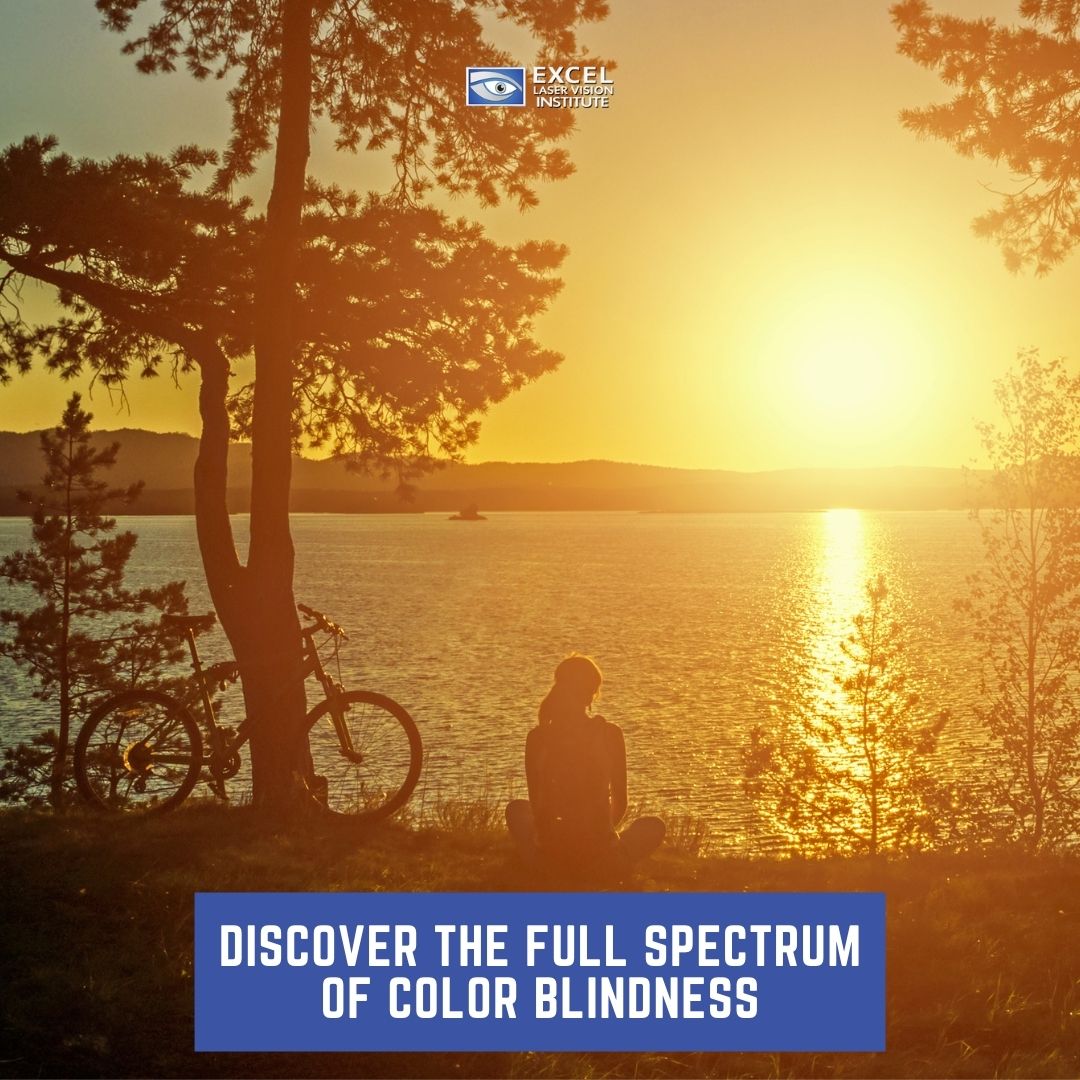
Discover the Full Spectrum of Color Blindness
The eye doctors can tell you that there are various ways a person can be colorblind, and it is very rare for a person to see only in black and white.
The laser eye surgeon of Excel Laser Vision Institute, Doctor Moosa, explains to us that complete color blindness is known as monochromacy, and it is so rare that only one in 33,000 gets it. For a lot of people with color blindness, it only affects specific colors, and a few factors influence which ones and the reasons for it. Let us closely examine the different types of color blindness.
What Are The Basics Of Color Vision?
When it comes to color blindness, it is critical to understand the principles of color vision. The first step in the vision process is light hitting the photoreceptors in our eyes, which appear in two types: rods and cones. Rods are good for differentiating between the quantity of light the person is seeing, which is important for things such as night vision, while cones recognize differences in color.
A person with normal vision has three types of cones that absorb light from various parts of the visible spectrum. Some process short (blue) wavelengths, some process medium (green) ones, and some process long (red) ones. It is very similar to the way tiny red, green, and blue phosphors on old TVs could come together to create millions of colors.
Do Genetics Play A Role In Color Vision?
A lot of the time, color blindness happens because of a mutation on the X chromosome. Since it’s a recessive gene, women, who usually have two X chromosomes, have two possibilities to have the gene for normal color vision. On the other hand, men only have one. A woman, who has sons, and a copy of the color blindness gene but isn’t colorblind herself could have a 50% chance of having a son that is colorblind. For this reason, about a dozen men are colorblind but only one in every 200 women is!
What Are The Types Of Color Blindness?
Although the only way for color vision to be correct is known as trichromacy, there are a few ways for it to go wrong. A person with anomalous trichromacy has all the types of cones but some of them fail, and the outcome is limited color vision almost to a point of someone with dichromacy, which means they are completely missing one type of cone.
The most common color blindness is red-green since it’s probably because the red cones (protanomaly/protanopia) or the green cones (deuteranomaly/deuteranopia) fail or they are absent. No matter what, the person sees the world as a landscape of dull brownish-yellows, and this type of color blindness affects more men than women.
Blue-yellow color blindness is the least common with only 5% of cases. Eye doctors realize that it’s this type of color blindness if tritanopia cones are missing or tritanomaly are failing. This doesn’t originate from X chromosomes and so it’s split evenly between the sexes. As a result of this type of color blindness, the person sees a palette of pinks, teals, and browns.
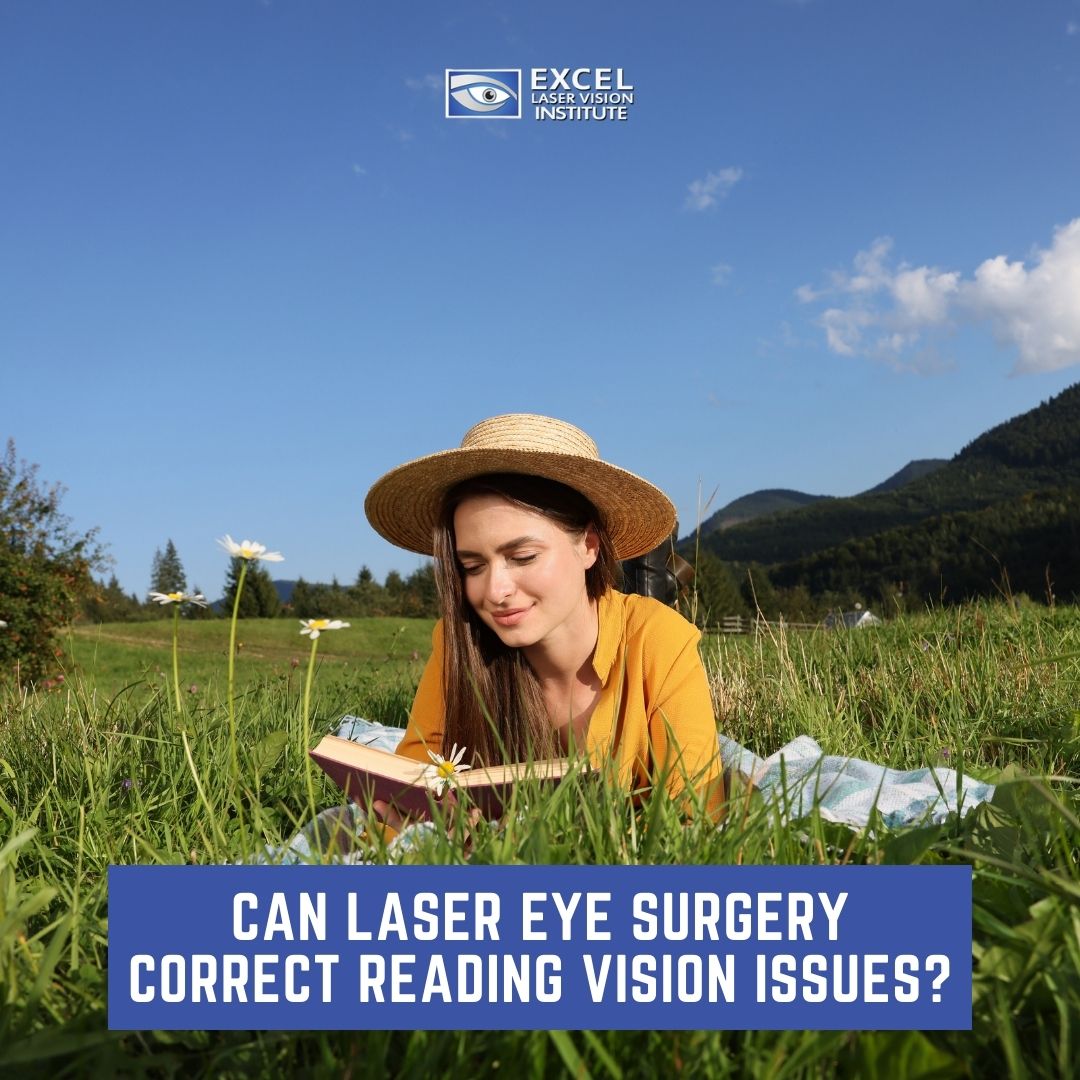
Can Laser Eye Surgery Correct Reading Vision Issues?
If you feel it’s getting more and more challenging to focus on words when you are reading a page, you are getting headaches after reading for long stretches of time, the LASIK Orange County eye doctors are here to let you know that you’re probably feeling the effects of age and you’re beginning to lose your reading vision.
Throughout the years, the eyes lose their muscular strength, making it more difficult to focus at close distances. The best laser eye surgery doctors in Orange County call this condition presbyopia. It’s an age-related refractive condition that develops in the loss of focus up close. The eye’s lens becomes less flexible, and it usually means that you’ll require eyeglasses to read.
Presbyopia can happen in individuals who in any other way have good vision, but it can also come about in people who are already affected by other optical conditions such as hyperopia, astigmatism, and myopia. Fortunately, there are vision correction treatments at Excel laser Vision Institute which can assist in correcting this very common problem.
What Are The Symptoms Of Presbyopia?
The LASIK Orange County eye doctors tell us that there are several common symptoms that people with presbyopia suffer from. So, if the following problems sound like something you’re going through, then you may have to think about your options, or book a consultation at Excel Laser Vision Institute to find out how we can assist.
Problems focusing on objects that are closeby
Suffering from headaches or eye pains when doing work close-up or reading.
Experiencing fatigue when focusing for long periods of time
Depending on brighter or increased lighting
You have to hold cell phones, books, and other reading materials at arm’s length to correctly focus on them
When presbyopia begins, it usually happens from the age of 40 and becomes more apparent after that. When a person reaches the age of 60, many individuals will have lost the elasticity in the lens that lets them focus on objects close up.
Can Reading Vision Be Enhanced?
When you come for your free consultation, the LASIK Orange County eye doctors will let you know about all your options. However, the most common option for individuals with reading vision issues is to wear reading glasses. These types of glasses are usually specially designed to help the lens focus at short distances.
Since reading glasses are only required for short distances, they can be slightly annoying. Some people place them on a chain around their necks so they can conveniently get to them. While others carry them around in a case. However, having to always put them on and take them off just to read a recipe or an article in the paper can get on a person’s nerves. This is when LASIK eye surgery swoops in and saves the day!
Do You Want To Get Laser Eye Surgery For Reading?
Due to advancements in technology and surgical procedures, there are currently many alternatives available that provide a more permanent solution to reading vision issues.
Laser eye surgery is very well known as a successful treatment for correcting reading vision. With the help of a precision laser, your eye surgeon will reshape your cornea to correct any vision impairments you may have.
There are several different laser eye procedures to treat presbyopia which include:
Conductive keratoplasty
Laser-assisted in situ keratomileusis (LASIK)
Laser-assisted subepithelial keratectomy (LASEK)
Photorefractive keratectomy (PRK)
Let’s take a look at each one in more detail.
Conductive keratoplasty
This is when your eye surgeon uses radiofrequency energy to apply heat to very small spots around the cornea. The heat makes the edge of the cornea to slightly get smaller, increasing its curve (steepness) and focusing ability. The outcome of conductive keratoplasty is different for everyone and might not last long.
Laser-assisted in situ keratomileusis (LASIK)
This procedure involves the eye surgeon to cut a thin, hinged flap away from the front of the eye. Then the surgeon uses a laser to take off inner layers of your cornea to steepen its domed shape. LASIK recovery time is fast and less painful than other corneal surgeries.
Laser-assisted subepithelial keratectomy (LASEK)
The eye surgeon makes a very thin flap just inside the cornea’s outer protective cover, also known as the (epithelium). Then the surgeon uses a laser to reshape the cornea’s outer layers, steepening its curve, and lastly replaces the epithelium.
Photorefractive keratectomy (PRK)
Similar to LASEK, but in PRK the surgeon completely removes the epithelium, then uses the laser to reshape the cornea. The eye surgeon doesn’t replace the epithelium because it will grow back naturally, adjusting to the cornea’s new shape.
Besides laser eye treatments there are these options.
Lens Implants
Some eye doctors use a procedure that involves removing the lens in each eye and replacing it with a synthetic lens. This is known as an intraocular lens.
Many types of lens implants are available for correcting presbyopia. Also, there are lens implants that let you see things near as well as far. There are some that change position or shape within the eye (accommodative lens). However, lens implants can result in a decrease in the quality of a person’s near vision, and you may still require reading glasses.
Your eye doctor will inform you of the possible side effects such as blurring and glare. Plus, this surgery has the same risks that are linked to cataract surgery, which are infection, bleeding, inflammation, and glaucoma.
Empty heading
Corneal inlays
You could be one of those individuals who have huge success with a presbyopia treatment that consists of inserting a small plastic ring with a central opening into the cornea of one eye. The opening behaves similar to a pinhole camera and lets light focus inwards so the person can see close objects. If for any reason you don’t like the results of your corneal inlay procedure, your LASIK Orange County eye surgeon can take out the rings, and you can go forward with another treatment option.
If you want to learn more about Presbyopia, get in touch with the Eye laser Vision institute at (310) 905-8622.
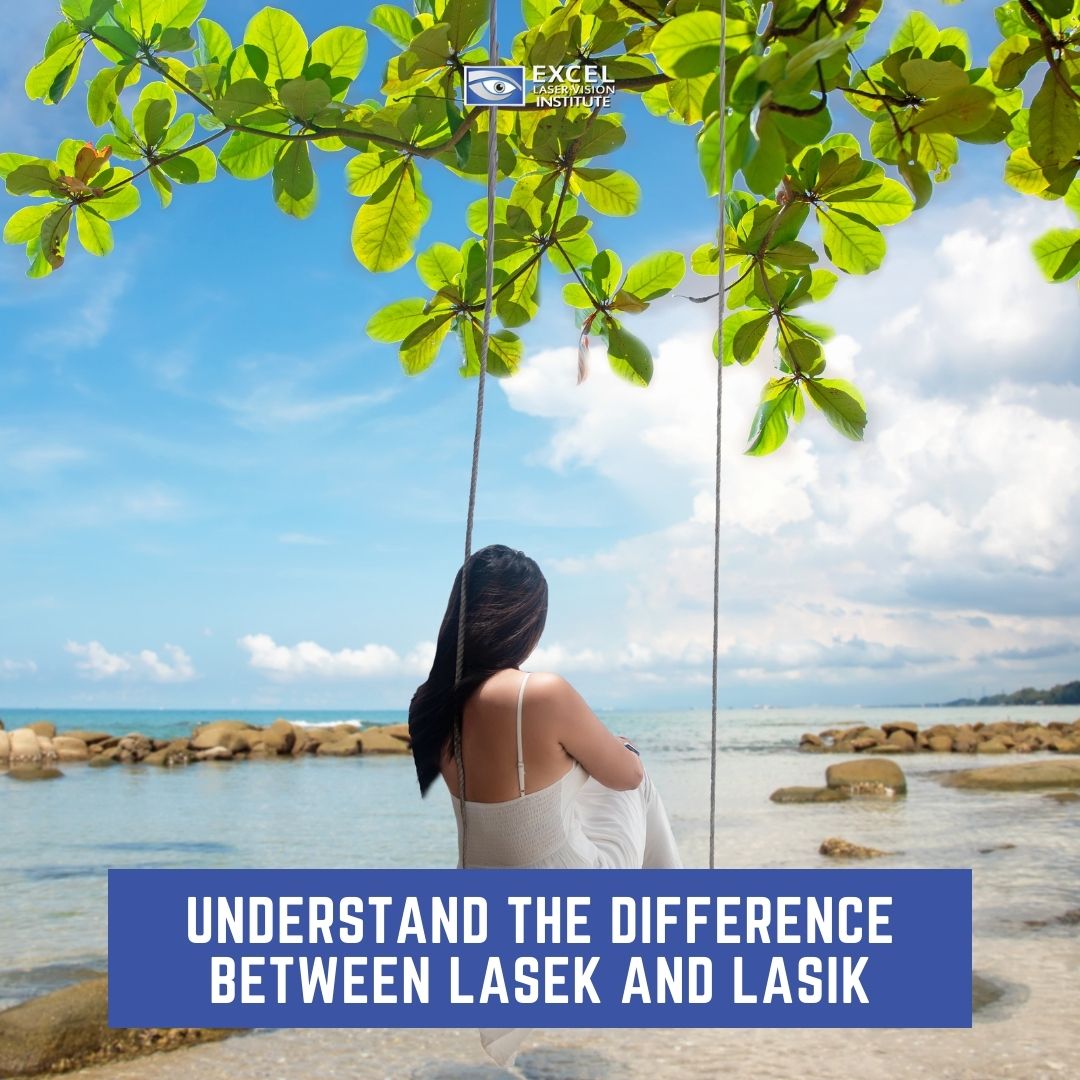
Understand the Difference Between LASEK and LASIK Los Angeles
If you aren’t a doctor or didn’t study medical terms, it can be confusing when you come across certain medical terms and jargon. The LASIK Los Angeles eye doctors believe you should go ahead and do your research into laser eye surgery, and if you encounter something you don’t understand, don’t hesitate to ask the best LASIK surgeons in Los Angeles about the terminology. Most of the time, patients don’t know the difference between vision correction procedures that are available to them, and that also goes for the differences between LASIK and LASEK.
The LASIK surgeons Los Angeles have to admit that LASIK and LASEK are nearly identical names, which doesn’t help matter much, but there are easy, noticeable distinctions between LASEK and LASIK that patients have to understand before going ahead with laser eye surgery.
What’s Laser Eye Surgery?
Laser eye surgery is a vision correction procedure that’s purpose is to make the patient less dependent on glasses or contact lenses.
Oftentimes known as laser vision correction, laser eye surgery utilizes lasers to alter the shape of the cornea (the front surface of the eye) which provides enhanced focus. Laser eye surgery can sufficiently correct both long and short-sightedness, as well as astigmatism. Although LASIK Los Angeles is known as ‘surgery’, it doesn’t require an incision.
The two main types of laser eye surgery are LASEK and LASIK. Their fundamental difference is based on the way the top corneal layer is taken off.
What’s LASIK?
LASIK stands for Laser-Assisted In-Situ Keratomileusis and is the best laser eye surgery in Los Angeles. It consists of two separate lasers. The first is a femtosecond laser that makes a thin, round flap on the cornea, which the doctor then folds back to enter the stroma or underlying part of the cornea.
When this step has been completed, the doctor utilizes an excimer laser to change the shape of the stroma. This takes away tissue from the cornea, to provide better vision and focus.
LASIK is usually a painless procedure, and both eyes can be treated in as short a time as fifteen minutes. Typically, patients recover within 24 hours.
What’s LASEK?
LASEK or Laser-Assisted Sub-Epithelial Keratectomy, also known as (LASEK), is slightly different from LASIK since the process only uses one laser. Rather than using a laser to create a flap in the top corneal layer, the eye surgeon applies an alcohol solution which helps to soften the surface layer, supporting it to be moved to the eye’s side.
When this top corneal layer has been removed, the eye surgeon can change the shape of the cornea with a laser. The top corneal layer is then brought back to its original position, and a protective contact lens is placed on the eye to magnify comfort during the healing process. In many situations, this can be taken off after four days.
Most eye surgeons will recommend LASEK to patients who have thin corneas, or other problems which may make conventional laser eye treatment complicated or risky. Similar to LASIK, both eyes can be treated on the same day, but the recovery process is a tad slower, usually lasting up to two weeks.
What’s The Difference Between LASIK And LASEK?
The most significant difference between LASIK and LASEK procedures is the method that the cornea is uncovered. With LASIK, this is carried out with a laser; when it comes to LASEK, the top layer of the cornea is removed using an alcohol solution.
Some LASIK Los Angeles patients, particularly those with thin corneas, will be told by their eye surgeons that their eyes are unsuitable for LASIK treatment and will be advised to go for a LASEK procedure.
What Are The Advantages And Disadvantages Of LASIK?
The advantages of LASIK are simple. The procedure can be done within fifteen minutes, and the patient normally recovers within 24 hours. The primary disadvantage of LASIK is the fact that patients with thin corneas are not suitable candidates for LASIK, and it’s not the most efficient procedure to treat individuals with severe short-sightedness. Also, patients who are at high risk of suffering an eye injury may want to avoid LASIK, since there is a possibility of the corneal flap being detached.
What Are The Advantages And Disadvantages Of LASEK
The best thing about LASEK is the fact that it’s suitable for all patients, and this includes those with thin corneas, pre-existing medical conditions, and severe short-sightedness.
Because the procedure does not require the eye surgeon to create a flap in the cornea, there is less risk for the patient to suffer from dry eyes than with LASIK. Also, this means LASEK patients can return to contact sports sooner than is recommended with LASIK.
LASEK’s main disadvantage is the recovery time, which is longer, and usually more uncomfortable than LASIK’s.
What’s The Cost Of LASIK VS LASEK?
Because LASIK Los Angeles needs more complex equipment to carry out a procedure compared to LASEK, the cost of the surgery is usually slightly higher. At Excel Laser Vision Institute, we have various financing options to suit your needs.
Before you decide on the type of procedure you want to do, make sure you talk to a medical professional who specializes in this sort of treatment. At Excel Laser Vision Institute, we offer free consultations, which you can book here. Or else, you can call us on (310) 905-8622, to book an appointment with us.



